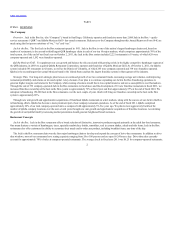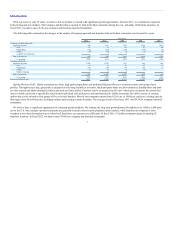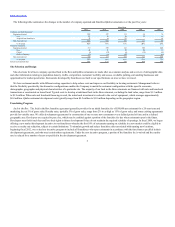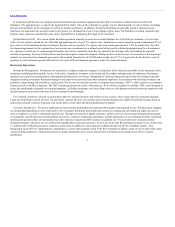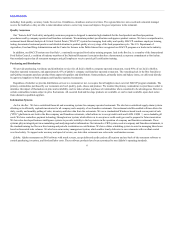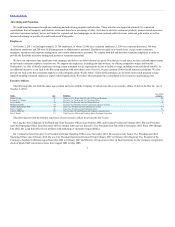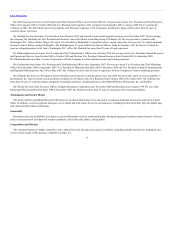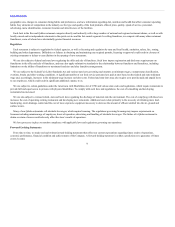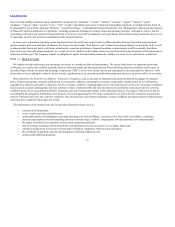Jack In The Box 2011 Annual Report Download - page 13
Download and view the complete annual report
Please find page 13 of the 2011 Jack In The Box annual report below. You can navigate through the pages in the report by either clicking on the pages listed below, or by using the keyword search tool below to find specific information within the annual report.
Table of Contents
any disruption in any of our supply relationships or distribution operations for any reason, it could have a material adverse effect on our business, financial
condition and results of operations.
Risks Associated with Severe Weather and Natural Disasters. Food service businesses such as ours can be materially and adversely affected by severe
weather conditions, such as severe storms, hurricanes, flooding, prolonged drought or protracted heat waves, and natural disasters, such as earthquakes and
wild fires, and their aftermath, which can result in:
• lost restaurant sales when consumers stay home or are physically prevented from reaching the restaurants;
• property damage and lost sales when locations are forced to close for extended periods of time;
• interruptions in supply when vendors suffer damages or transportation is affected; and
• increased costs if agricultural capacity is diminished or if insurance recoveries do not cover all our losses.
If systemic or widespread adverse changes in climate or weather patterns occur, we could experience more of these losses, and such losses could have a
material effect on our results of operations and financial condition.
Risks Associated with Development. Development is critical to our long-term success. We intend to grow by developing additional company-owned
restaurants and through new restaurant development by franchisees. Development involves substantial risks, including the risk of:
• the availability of financing for the Company and for franchisees at acceptable rates and terms;
• development costs exceeding budgeted or contracted amounts;
• delays in completion of construction;
• the inability to identify, or the unavailability of suitable sites on acceptable leasing or purchase terms;
• developed properties not achieving desired revenue or cash flow levels once opened;
• the negative impact of a new restaurant upon sales at nearby existing restaurants;
• competition for suitable development sites;
• incurring substantial unrecoverable costs in the event a development project is abandoned prior to completion;
• the inability to obtain all required governmental permits, including, in appropriate cases, liquor licenses;
• changes in governmental rules, regulations and interpretations (including interpretations of the requirements of the Americans with Disabilities
Act); and
• general economic and business conditions.
Although we manage our development activities to reduce such risks, we cannot assure that present or future development will perform in accordance with
our expectations. Our inability to expand in accordance with our plans or to manage our growth could have a material adverse effect on our results of
operations and financial condition.
Risks Related to Entering New Markets . Our growth strategy includes opening restaurants in markets where we have no existing locations. We cannot
assure that we will be able to successfully expand or acquire critical market presence for our brands in new geographic markets, as we may encounter well-
established competitors with substantially greater financial resources. We may be unable to find attractive locations, acquire name recognition, successfully
market our products or attract new customers. Competitive circumstances and consumer characteristics in new market segments and new geographic markets
may differ substantially from those in the market segments and geographic markets in which we have substantial experience. It may also be difficult for us or
our franchisees to recruit, train and retain qualified personnel to manage restaurants. We cannot assure that company or franchise restaurants can be operated
profitably in new geographic markets. Management decisions to curtail or cease investment in certain locations or markets may result in impairment charges.
12


